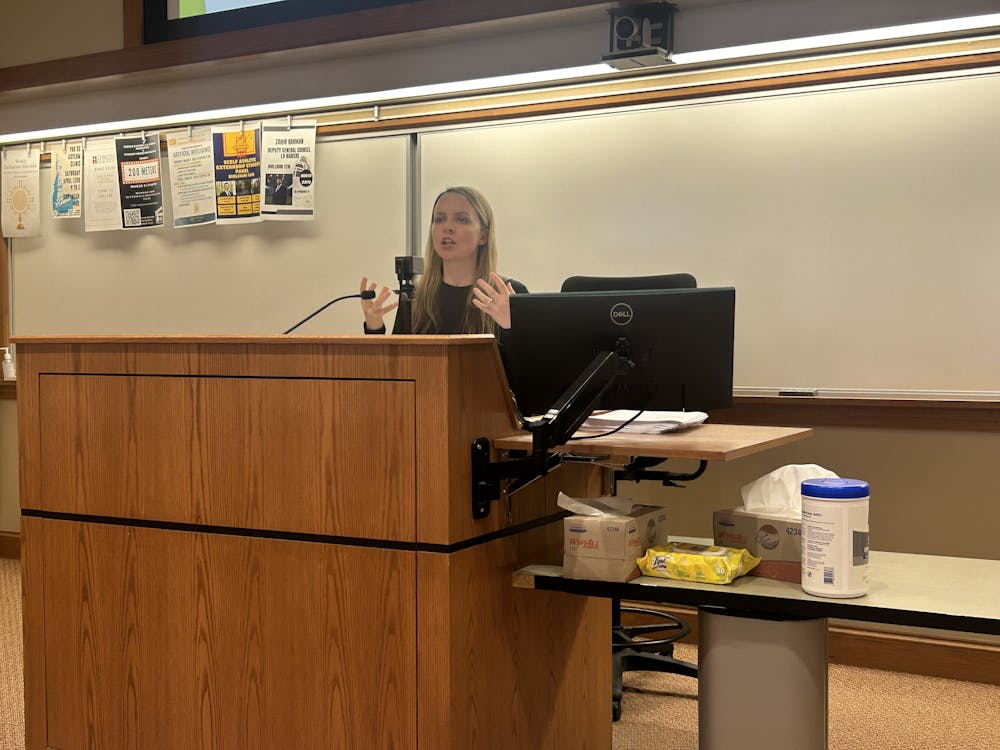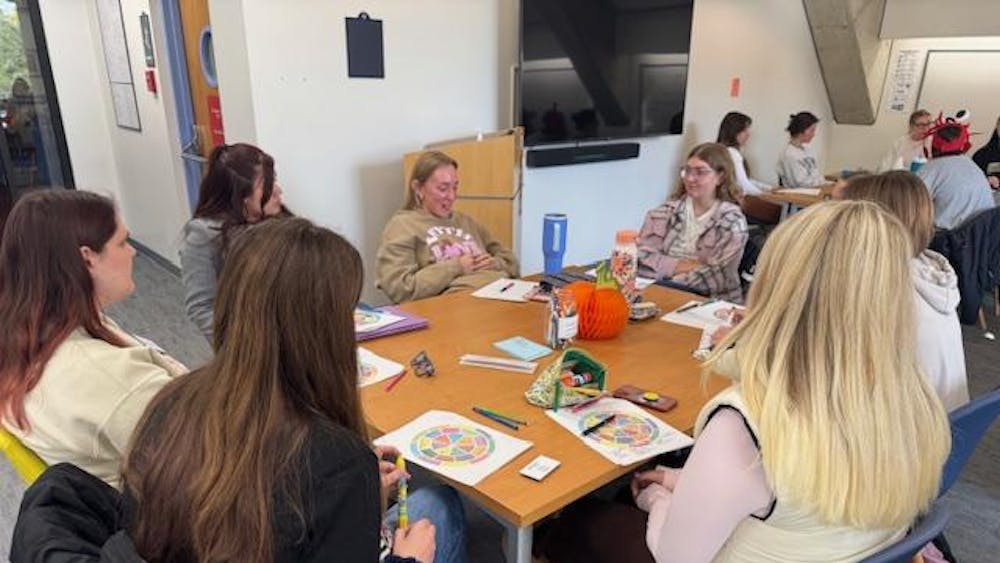Stephanie Barclay, faculty director of the Notre Dame Law School Religious Liberty Initiative, gave a lecture and led a small discussion about the case Apache Stronghold v. United States on Monday afternoon in the Eck Hall of Law. Barclay and other students and faculty in the Religious Liberty Initiative continue to represent the Apache people amici curiae, which means the group assists the court’s decision by providing expertise, information or insight relating to the case.
Apache Stronghold aims to settle the issue of transferring Oak Flat, a piece of invaluable and sacred land to the Apache and several other tribes, to a foreign-owned copper mining company called Resolution Copper.
“Since time and memorial, [Oak Flat] has been sacred to multiple tribes including the Western Apache, and they believe it is the direct corridor to their Creator,” Barclay said. “This is a site where numerous essential religious ceremonies take place, including the ceremony that is important to mark the transition to womanhood for young women in the tribe. So there are a lot of things that only can happen in Oak Flat and not in any other places.”
If Resolution Copper earns the right to this piece of land located in Arizona, the company will construct a 2-mile-wide, 1,110-foot-deep crater for mining purposes.
According to Barclay, the government’s environmental impact statement about Oak Flat stated, “The physical impacts on tribal sacred sites will be immediate, permanent and large in scale. Once the mining operations commence, the changes will permanently affect the ability of tribal members to access special interest areas for cultural and religious purposes.”
In her lecture, Barclay explained the details and legal definitions of the case, focusing on the research done by the Religious Liberty Initiative in terms of supporting the Apache Stronghold.
One of the most relevant legal rulings the courts consider, according to Barclay, is the Religious Freedom Restoration Act (RFRA). In relation to limitations on religious expression, RFRA states, “[The] Government may substantially burden a person’s exercise of religion only if it demonstrates that application of the burden to the person is in furtherance of a compelling governmental interest [and] is the least restrictive means of furthering that governmental interest.”
A district court originally ruled the transfer of Oak Flat to Resolution Copper fit this criteria and the Ninth Circuit Court of Appeals affirmed the ruling.
Barclay said the use of RFRA, other religious freedom acts and a general disregard for indigenous religion have been used against Native Americans.
“The colonial state and federal governments of our nation have been desecrating and destroying indigenous sacred sites since before the Republic was formed, and it continues today,” Barclay said. “Among all of the Native American cultural and religious issues in America, sacred sites are one area where they have perhaps enjoyed, by far, the least success in protecting this aspect of culture and identity.
“The crux of the problem is as follows: because tribes were divested of so much of their traditional homelands by the government, tribal members are often in this unique position of being beholden on the government in order to access places where they have performed centuries of ceremonies that are often critical and at higher rates than other religious groups that are in that position of being beholden to government,” Barclay said.
Barclay compared Apache Stronghold to other cases in the past relating to sacred lands and indigenous religious practices. One of the most notable was Slockish v. Department of Transportation, which dealt with the U.S. Department of Transportation clearing a patch of forest in Oregon to make way for a wider highway.
Just like the Apache, the Yakama Nation found the land to be invaluable and sacred, and they used this land for religious ceremonies. The courts ruled against Slockish, which allowed the destruction of their land, an ancient stone altar to be scattered into rubble and removed access to the Yakama Nation.
Barclay pointed out that the court’s argument against Slockish was similar to the Ninth Circuit’s argument against the Apache.
“The court said, ‘There's no coercion here. There's no denial of benefits, no penalty, nothing to see here,’” she said.
Barclay hopes the case will reach the Supreme Court, not only for the sake of the Apache people, but for the sanctity of religious expression as a whole. Without a limit to the spectrum of what’s considered a “substantial burden,” the government can continue to push limitations of religious expression to suit the government’s needs, she said.
“The government can give you a $5 fine and make it more expensive. It can increasingly make it more and more costly and difficult to exercise your religion. And at some point, the government can make exercise of your religion impossible altogether,” Barclay said.
“It is more consistent with the text of the statute with Congress's goal of providing heightened, not less, protection directly, then we had with the First Amendment. To say that when you get to the point where we completely make it impossible for someone's ability to exercise their religion, that's the most easy way that you satisfy this requirement under RFRA.”
Barclay said if this case makes it to the Supreme Court, the justices may see the potential for religious limitation in RFRA and ultimately put an end to religious discrimination, especially for Native Americans.










